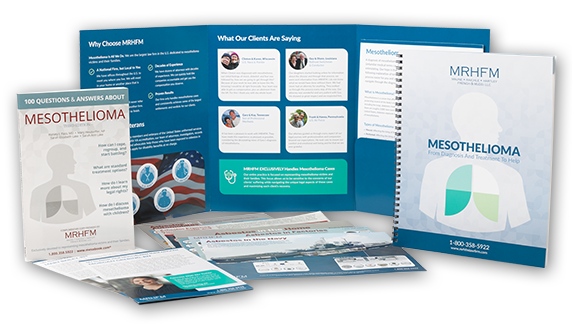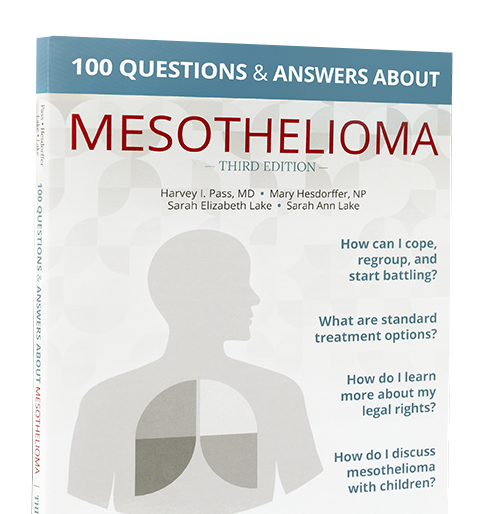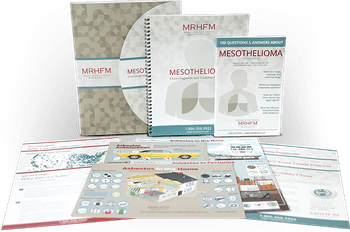By Robert E. Sweeney | October 1978
There is a popular misconception that asbestos disease cases are basically lung cancer cases. However, scientific studies identify the disease of asbestosis, as well as pleural and peritoneal mesothelioma, as resulting from the inhalation and ingestion of asbestos dust found in the workplace.
Further studies indicate that esophageal, stomach, colon, and rectal cancers are equally caused by industrial exposures.
The workers that we represent are contaminated on construction sites, in shipyards, and in factories throughout the United States. These workers are obliged to labor in dirty, dusty, confined environments. They earn and toil in boiler houses and hospitals and factories and are daily in contact with asbestos, which is easily airborne, easily swallowed, and easily inhaled.
Lawyers handling cases on behalf of such workers and their families must therefore become familiar with the state of the art in research medicine, science, and in epidemiology concerning asbestos dust.
We should not only pay heed to scientific progress in the American medical and scientific community but to that of the scientists of the United Kingdom as well, who have been primarily involved in this industrial dust area since the early 1900s.
The most prominent and earliest works on asbestos dust inhalation appeared in the British Medical Journal of 1924.1
These articles provide insight into the medical research which led to the regulation of asbestos dust in factories throughout Great Britain in the mid-1930s. At that time the Ministry of Factories and Health of Great Britain promulgated and adopted regulation concerning the distribution and uses of asbestos.
It is interesting to note that the Johns Manville Corporation, which produces about 70 percent of the asbestos in the world, and markets it through both British and American corporations, has submitted to the regulations in Britain.
The university medical libraries of this country are certainly important sources of information on the state of the art dealing with asbestos. However, the Department of Environmental Medicine at Mount Sinai Hospital in New York City has some of the best research material available in the world on the subject.
At Mount Sinai, prominent medical researchers of international recognition have worked most effectively under the direction of Dr. Irving J. Selikoff, M.D., to develop creditable and recognized medical surveys on the relationship of asbestos dust inhalation to the onset of pulmonary disabilities.
Trial lawyers should be familiar with the fact that it was the studies of Dr. Selikoff and the research team at Mount Sinai that developed the basis for our knowledge of the statistical association between asbestos inhalation and ingestion and the high rate of cancer in insulators.
Industry Activity
Circa 1930, the adverse effect of an increasing number of insurance claims on the workmen's compensation costs to the industry prompted an inquiry into the problem. Alerted by the work of medical and scientific investigators throughout the world, the asbestos industry, led by Johns Manville, commissioned the metropolitan Life Insurance Company in early 1930s to investigate and determine the relationship of asbestos exposure to the high rate of pulmonary disease encountered among workers in the asbestos mines and factories.
These studies were conducted under the leadership of the medical director of the Metropolitan Life
Insurance Company, Dr. Anthony J. Lanza.2
The project ran from October 1929 to January 1931. It included study of dust conditions in asbestos mines and mills in Canada and the United State.
Physical examination of asbestos workers included X-rays, films, and studies of dust exhaust systems.
The conclusions of the industry's own research proved that prolonged exposure to asbestos dust caused pulmonary fibrosis and that cases of definite cardiac enlargement were frequently found to be associated with asbestosis.
The study recommended that the industry face seriously the problem of dust control in asbestos plants and sponsor studies on known cases of asbestosis.
In short, the industry investigation clearly documents the fact that the industry was mining and manufacturing a hazardous product. X-rays taken in the study showed fibrosis buildup in the lower lobes of the lungs of the workers examined.
Later, the industry established the Industrial Hygiene Foundation of Pittsburgh, and I am convinced that this organization was established to cloak their activities.
From time to time, reports would be received by the foundation and the asbestos manufacturing leadership of the nation alerting the industry to the hazardous potentials of the product that they were manufacturing. The reports urged that precautionary methods be adopted to remove workers from the risk of inhalation or ingestion of the airborne asbestos fibers.
Further recommendations were made that engineers be hired to design exhaust systems in the plants to remove workers from the harmful effect of dust inhalation. As a result, exhaust systems began to appear in American factories. Respirators and masks were recommended. Other steps were taken to physically examine employees on an annual basis to determine the particulars of the state of the health of employees and the degree to which they were harmfully affected by their exposure to asbestos dust.
With full knowledge of the state of the art of medicine and science, with full knowledge of the fact that their own mine and plant workers were being harmed and that this harm was continuing on a progressive basis, the manufacturers continued to receive workmen's compensation claims from injured men and women. They continued to adjust or negotiate these claims, fully mindful of the scope of the ever-increasing occupational hazard.
We have delved into the files of their medical libraries and the papers of their directors. We have found an exchange of correspondence between these directors and the leadership of the American asbestos manufacturing community pertaining to these studies. The tone of the correspondence is that of a warming to the industry of the harmful and dangerous effects of asbestos and a prescription of recommendations for improving industrial hygiene.
Act I, Scene I
The tragic story of the epidemic of asbestos dust disease in the United States of America is just now unfolding. What we are looking at is Act I, Scene I of a health tragedy that could have been avoided. I predict that we will be hearing much more about this health epidemic as more and more American men and women die at early ages from asbestos dust exposures that could have been avoided.
I share with you the testimony of the vice president of Johns Manville before the Assistant Secretary of Labor for Occupational Safety and Health a few years ago. He said that his company certainly knew about the harmful effects of asbestos 30 or 40 years ago and that it has tried to investigate the problem and follow the advice of medical experts.
Unfortunately, the steps that they took only served to partially protect their factory and mine workers. They completely neglected to consider the effect that their harmful and hazardous product had on the general public, or the field worker who had to come in contact with it on the construction site or in the maritime shipyard.
The results of discovery in asbestos cases clearly indicate that the manufacturing companies failed to take air sample tests in the construction environment and failed to go into the shipyards and construction sites to determine the conditions under which their product was used.
They failed to determine what precautions should be taken and what consequences could be expected. In short, they avoided the duty that was theirs under Section 402A of the law of strict liability, where they are charged to the knowledge of an expert as to the potential dangers and hazardous potential of the product that they produce.
They failed to keep abreast of the state of the art, the work of epidemiologists and researchers. They failed to underwrite research and, most importantly, they failed to adequately and properly label their product as hazardous, once they were on notice of the scientific facts.
As a result, workers and their families have been unnecessarily injured. Recently, I interviewed a 43-year-old woman in the State of Indiana who is a victim of pleural mesothelioma: a mother with a beautiful family who has never directly worked in an asbestos environment.
She married an asbestos worker. She washed his clothes, and over a period of time of handling his work clothing in the small, closed environment of her basement, she inhaled a sufficient quantity of asbestos to develop the disease which has reduced her life expectancy to six months. She takes medication every few hours to endure the pain of the tumorous cancer which has carved away almost half of the left side of her ribcage. She suffers; and her suffering is the direct result of the greed and the indifference to good industrial health practices of corporate America.
All the victims seem to tell the same story: the material is easily airborne; it gets in your nostrils; it gets in your ears; you swallow it; it clings to your skin; it cuts in and sometimes abrades the skin between the fingers and they start to bleed. Imagine what it does to the tender lining of the lung.
It is important to realize that asbestosis is a progressive insidious disease and that all too often there is a typically long period of latency between the time of initial injurious exposure and the time of the onset of the disabling symptoms of disability.
In some instances the latency period can by as long as 25 or 30 years. For this reason, often professional medical men do not make the connection between a disease which appears at mid-life and an injurious exposure to asbestos which may have occurred in the young adult years.
The Client's History
A lawyer interviewing a client with a workmen's compensation claim dealing with pulmonary asbestosis should inquire whether or not the client: worked in a shipyard; worked with asbestos or was anywhere near where asbestos was being used; or whether he ever worked in closed environments repairing and tearing down boilers, removing the outer lining, and shredding old dried asbestos from the mechanism.
A lawyer should ask:
- Has the client ever had X-ray studies?
- Does he smoke? How much? For how long?
- Has he ever been refused insurance due to pulmonary problems?
- Has he submitted to a recent physical?
- Has he ever been rated for life insurance because of pulmonary deficiencies?
The alert, examining advocate must pinpoint as best he or she can when the worker's symptoms first appeared. This is very important, since it might bear upon statute of limitations problems. Different states begin the calculation of time on a different basis as to when the statute begins to run. Find out:
- When was the client's first medical examination?
- When was the client first informed of the diagnosis by the family doctor or specialist?
- When did the client first experience shortness of breath, clubbing of the fingers, dizziness? Be sure to secure letters of authorization addressed to the client's doctors and medical specialists.
- Has the client ever used a mask or respirator in his workplace? Did he ever know the toxic agent he was protecting himself against?
If the client belongs to a union, find out if there is a health hazard program. Has the client ever been notified by his union's medical consultants as to particular health hazards associated with his job?
Secure a chronology of the client's entire work history. Be sure to inquire whether he or his spouse has kept the old income tax records which can be used most effectively in establishing his work record By all means, do not overlook the fact that the administrator of the health welfare office or fringe benefit program of the union maintains detailed and accurate records of employment.
After you establish where the man has worked, go down and speak to his employer. Learn as much as you can about the work environment of this particular client. Interview his co-workers, particularly those in his own age group. Find out what jobs they recall having worked on together. Try to get an affidavit describing the working conditions on those jobs from these co-workers. Have them note whether or not the materials they worked on had any precautionary health hazard warning labels on the bags or boxes.
If your client worked for a utility industry, you might inquire at the utility division of engineering, which usually maintains good records on all products, to find out the names of the suppliers of materials who bid on those jobs and the specifications of the insulating materials used.
These former employers can be very helpful as allies in the assertion of third-party claims against the basic manufacturers of asbestos products. It is very important that these employers understand that they are not being targeted and cannot be brought into the litigation; that the sole purpose of the inquiry is to determine which materials and products caused the harm and injury to their employee.
Determine if there were any safety regulations or surveillance practices in effect on the job. Many times we find that the client, while not an asbestos worker, is a sheet-metal worker, a pipe-fitter, a plumber, or a painter, and that he came in contact with asbestos materials because of the simple fact that he worked in close proximity on the work site to the asbestos insulators and was thus contaminated.
In discovery deposition, find out from these sources if they can supply you with any of the invoices or specifications that were published at the time the materials were purchased.
In preparation of the pleadings be certain to develop through interrogatories addressed to all defendants.
Anticipate the Defense
Anticipate the defense of the manufacturers' attorneys. They will say: "We proceeded to believe that exposure to asbestos material was not harmful and we really did not know that we had any duty as manufacturers until about 1965 when Dr. Selikoff published his articles on asbestos insulators. It was at that point that we then became aware of our responsibility and aware of the fact that asbestos was indeed harmful."
Your job on behalf of the plaintiff is to prove that these claims are sheer nonsense and are unsupported by fact. Use the library, the British and American studies, the US Health Service publications, and other source materials to prove your point. For source materials, direct requests to the state and federal agencies, particularly the Division of Occupational Safety and Health of the US Labor Department and the National Institute for Occupational Safety of HEW.
Check the workmen's compensation files in your district and do not overlook the public health libraries. Dig into the material at the National Academy of Science and, most particularly, regional safety libraries.
Do no neglect to research the manufacturers' corporate reports, for they will indicate the corporations' knowledge of asbestos. Eight years ago Raybestos-Manhattan said in its annual report: "We are delighted to announce to the insulating industry that we have perfected a new product."
Then the company went on to name the product and its properties, adding: "As you know, this bears upon what we have known for over 30 years, that asbestos dust is extremely harmful and dangerous to health."
Check back on the manufacturing industry's agenda for national meetings as early as the 1930s when doctors of the United States Department of Health and federal health agencies were speaking on pulmonary asbestos-related problems.
Once you have the research materials sufficiently gathered, the next step is to visit the family doctor. Ordinarily, he will be more concerned with his patient's care than with the state of medical research. He is generally so busy with office appointments and hospital commitments that he does not have adequate time for in-depth studies outside of his own personal professional practice.
Your duty is to help him. Assist him by turning over to him any knowledge that you have developed in your research. Willingly share your materials with him. Indicate to the professional doctor that you have read the recent studies which claim that, by the use of electronic microscopic methods, pathologists are now able to identify asbestos fibers in tissue.
If your client has mesothelioma, discuss the interesting question of how the asbestos fibers migrate within the body, as it may provide a clue to the origin of your client's disease process.
Delicately consider the procurement of authorizations for post-mortem examinations.
In discovery it is helpful to talk to the hierarchy of the defendant corporation. Find and identify the medical director of the corporation. Determine when he was hired, when he retired, the name of his successor, whether he ever spoke at seminars. Secure copies of his articles and addresses to professional societies wherein he discussed asbestos.
I recently had the opportunity to depose the medical director of Johns Manville. Let me share with you a part of an address that he gave at an industry seminar which provided some of the materials for the depositions. In his seminar speech he said: "The industry has a tremendous legal responsibility for the harmful injuries that have been visited on countless people - there is in the United States, exposure, a time bomb. A time bomb that may go off and is continuing to grow. We can't begin to approximate how many people will be adversely affected."
These kinds of predeposition comments are very helpful in eliciting from the witness admissions that the industry that acts thusly - that does not label its dangerous product, that does not forewarn the user of these dangers, that does not understand the conditions under which their product is being used, that does not adequately research or keep abreast of the state of scientific and medical art - is in face an irresponsible industry that out to be made to respond in damages to the victims that it has thus harmed.
Conclusion
We have had an interesting experience in the last five years of involvement in asbestos litigation. The story is still unfolding and it is growing, but if occupational health and safety problems are to be dealt with in real terms, they cannot simply be viewed as medical or technical problems. Rather, they must be thought out in the larger context of workers' struggles for economic security and humanized working conditions. They must be controlled by the decision-making concerning health practices in the industry.
Workers must not have to work in ignorance of the dangers and harmful effects of asbestos in the workplace.
This is a very exciting detective story which will bring you to touch upon many other disciplines, and as a consequence, as an asbestos litigator, your life will be made much richer for it. Your clients, the victims and their survivors, are going to get less injustice. The asbestos industry is going to be made much safer. Your philosophical understanding of corporate American and our total social architecture will be your most important tool in locating this information.
In doing this, you and I will have executed our responsibility as lawyers most admirably.
1W.E. Cooke, M.D., pathologist "Fibrosis of the Lungs Due to the Inhalation of Asbestos Dust." The British Medical Journal July 26, 1924, page 147 "Pulmonary Asbestosis," W.E. Cooke, M.D. British Medical Journal December 3, 1917, an article entitled "Pulmonary Asbestosis." Also worthy of noting is the early memorandum on asbestosis by P.R.A. Merewether, Tubercle, November, 1933, page 69.
2Anthony J. Lanza, U.S. Public Health Report, Volume 59, January 1935, entitled "The Effect of Inhalation of Asbestos Dust on the Lungs of Asbestos Workers."





